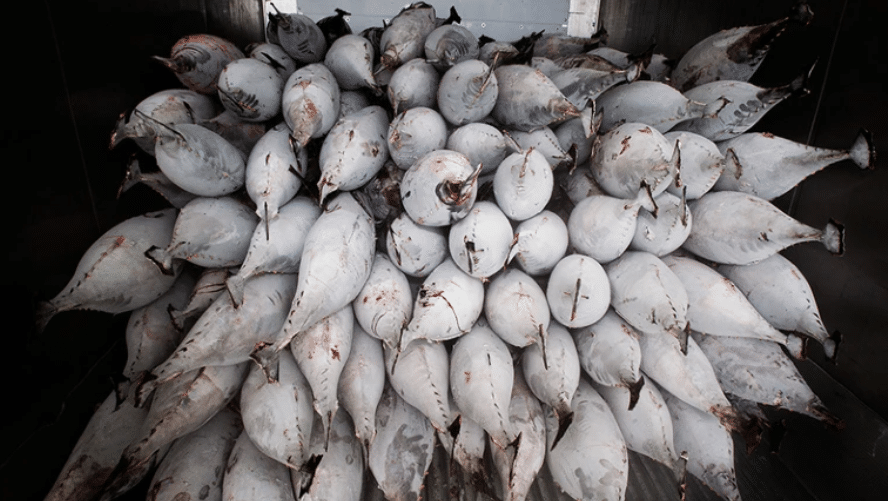
1. None of the UN’s Sustainable Development Goals Are on Track
None of the 17 United Nations Sustainable Development Goals (SDGs) is on track to be achieved by 2030. Even worse, progress on the 14th goal to conserve and sustainably use the oceans has been going backwards. SDG 14 comprises ten targets to address acidification, pollution, overfishing, and biodiversity loss. Three are on track, two are progressing slowly, and five targets have stagnated or regressed. This is in stark contrast to the historic February 2022 ocean summit where more than 100 countries planned to protect 30% of the ocean by 2030, adopt new laws to safeguard marine life in international waters, and end illegal fishing.
Key to fixing the disparity between promises and reality will be implementing measures to hold nations accountable, which means better progress metrics and funding. Much of the extra funding has already been negotiated through other forums, such as the UN’s Green Climate Fund. Editorial Comment: This is of particular interest to Sea Save Foundation. We have been onsite participants in SDG #14 for more than a decade. It is frustrating to note that only a fraction of overall United Nations’ SDG funding is allocated to ths goal and to ocean sustainability.
Thank you for your generous gift that will help us continue the production of this weekly, free publication

2. UN Unveils First Draft of Plastic Pollution Treaty
Following the agreement on broad terms of the Treaty last year, in which advocates for a reduction in plastic production won out, the United National Environment Programme published a ‘zero draft’ of the Treaty in English on Monday (4 September). The draft states that nations should aim for the “prevention, progressive reduction and elimination of plastic pollution throughout the lifecycle of plastic”.
Their approaches should be “comprehensive” and cover all parts of the lifecycle. The idea is to reduce the absolute level of plastics production globally, with a focus on the materials that pose the most risk to the environment and public health. This will doubtless prove unpopular with major producing nations and the petrochemical industry. The draft stops short of proposing time-bound, numerical targets but does stipulate that harmful chemicals and the hardest-to-recycle plastics should be phased out more rapidly.
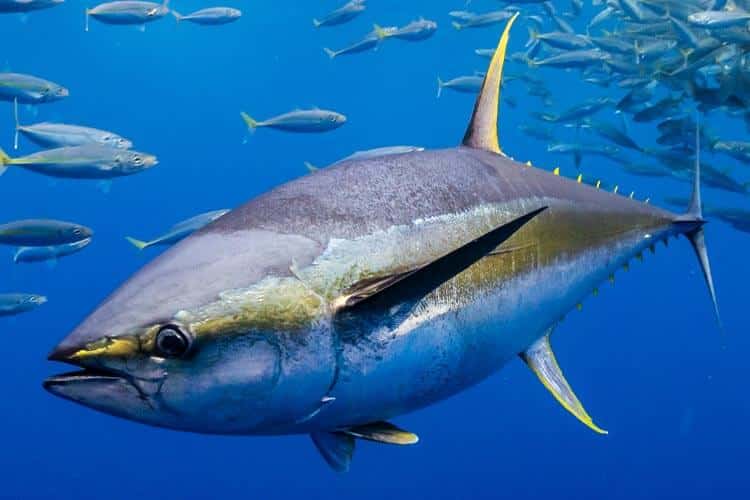
3. New Study Suggests Narrowing Habitat for Galápagos Tuna
An international team of scientists from Marine Megafauna Foundation, the University of Southampton and Universidad San Francisco de Quito, has published a new study suggesting that the habitat of yellowfin tuna may narrow in the future as warming waters reduce the oxygen content of deeper parts of the ocean, limiting the tuna’s vertical range and making them more susceptible to overfishing.
Yellowfin tuna (Thunnus albacares) are fast-swimming fish with a high metabolic rate and, therefore, a high demand for oxygen. This mostly limits the depths in which tuna swim to the oxygen-rich waters near the ocean’s surface. Understanding how fish stocks utilise the habitat in which they live is important for understanding how to best prevent their overexploitation in the future, especially with the potential for their habitats to be ‘compressed’, as the climate continues to change.
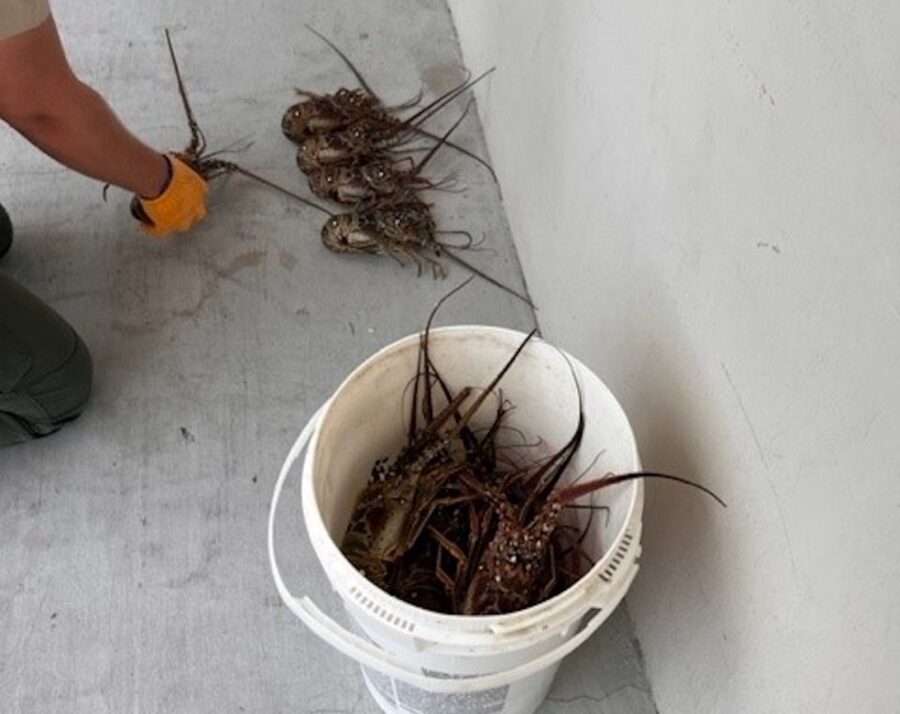
4. Alleged Lobster Robbers Nabbed in Florida
Three men reportedly robbed a lobster trap and attempted to flee state wildlife officers in Layton, Florida, on August 22. Florida Fish & Wildlife Conservation (FWC) officers said they saw three men on a boat near a lobster trap line. Officers said they saw a diver handing lobsters to individuals on the boat as they moved along the trap line. The diver returned to the vessel after clearing all traps and began riding back to the dock, officers said.
FWC officers attempted to stop the vessel, but the operator sped up. When they reached the entrance to their destination, they dumped the stolen lobster into the basin before returning to the boat dock, where they were arrested. The three men face several felony charges, including trap molesting, fleeing and eluding law enforcement and tampering with evidence. They also face a misdemeanor court of interfering with FWC officers.
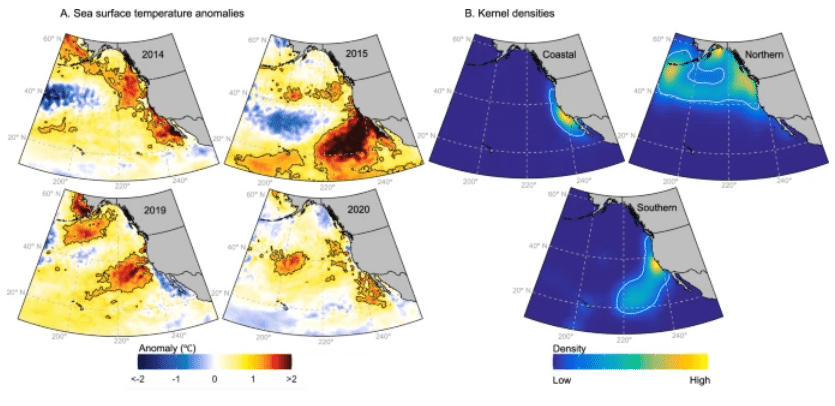
5. Effect of Marine Heatwaves on Top Predator distributions Are Variable but Predictable
Marine heatwaves cause widespread environmental, biological, and socio-economic impacts. However, heatwaves vary in intensity and evolution, and a paucity of information on how this variability impacts marine species limits our ability to proactively manage for these extreme events. Here, we model the effects of four recent heatwaves in the Northeastern Pacific on the distributions of 14 top predator species.
Predicted responses were highly variable across species and heatwaves, ranging from near total loss of habitat to a two-fold increase. Heatwaves rapidly altered political bio-geographies, with up to 10% of predicted habitat across all species shifting jurisdictions during individual heatwaves. The variability in predicted responses across species and heatwaves portends the need for novel management solutions that can rapidly respond to extreme climate events.
As proof-of-concept, we developed an operational dynamic ocean management tool that predicts predator distributions and responses to extreme conditions in near real-time.
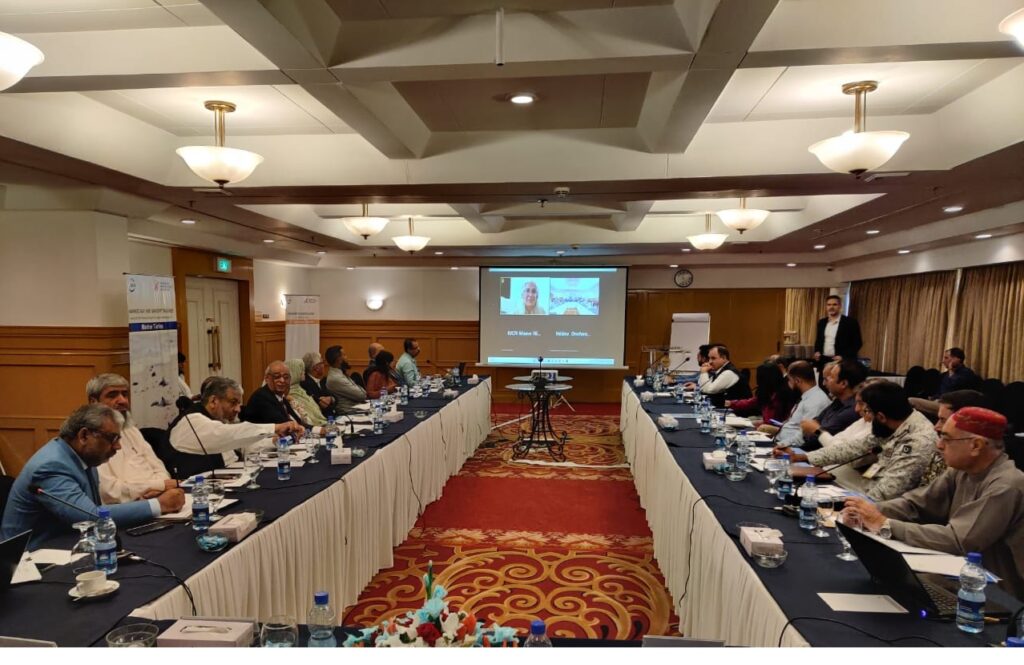
6. Coastal Ecosystem Restoration Project Commences in Karachi, Pakistan
The launch of Building Resilience of Coastal Ecological and Social Systems of Pakistan project, funded by the Prince Albert II of Monaco Foundation took place on September 1, 2023 in Karachi. The inception event drew representation from the government line departments, coastal agencies, Pakistan Navy, as well as from civil society organizations and academia.
The main objective of the project is to enhance the resilience of coastal ecosystems and communities within distinct coastal regions of Pakistan, specifically in Jiwani Coastal Wetland and Miani Lagoon in Balochistan and Indus delta in Sindh. Giving his welcome remarks, Country Representative, IUCN Pakistan, Mr. Mahmood Akhtar Cheema, emphasized the effectiveness of a collaborative approach, highlighting its potential for achieving sustainability.
He also noted that this project presents a distinctive opportunity to mobilise resources within the country through collaborative efforts.
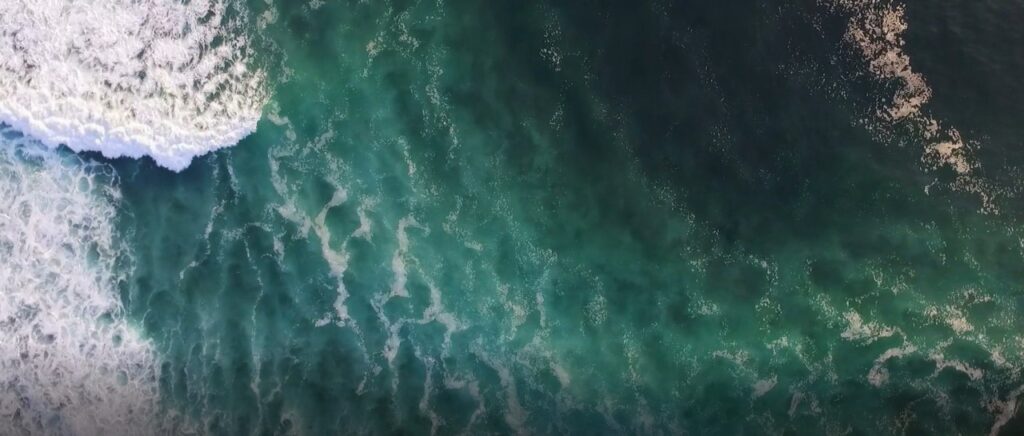
7. Is the Tide Turning for Blue Bonds?
Green bonds, which finance projects related to broad environmental objectives, are a larger and higher quality market today than they were five years ago. Blue bonds aim to support the sustainable use of ocean resources for economic growth, improve the livelihoods and jobs associated with the blue economy and preserve the health of the ocean ecosystem. But corporate issuance of blue bonds is still relatively rare.
This is partly due to the novelty of this structure, which still needs to be strengthened, and partly because companies as issuers are usually less directly exposed to the risks and opportunities of the oceans. Looking ahead, standardisation and regulation of the blue bond market may improve quality, and therefore increase investment in them. With growing concerns surrounding climate change, more investors may be turning to blue, use-of-proceeds bonds such as these.
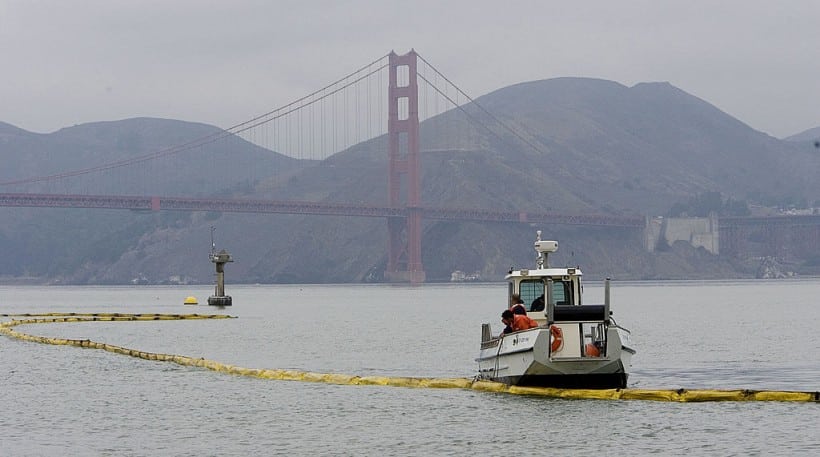
8. New Unique Marine Bacteria Can Help Decipher Deep-Sea Conditions Unknown to Science
According to a recent study, the new unique marine bacteria can help recycle carbon and nitrogen. The discovery could help understand the deep-sea conditions.Researchers have been studying different bodies of water, aiming to unlock new species. The discoveries can help with the protection and conservation of marine ecosystems.Oceans are vital for carbon storage. It helps to reduce the devastating impacts of climate change and global warming due to greenhouse gas emissions.
In a new research published in eLife, researchers cultured a strain ZRK32 or the Planctomycetes from the said cold see sediment. They enriched the bacteria using inorganic nitrogen sources and rifampicin. Only a few Planctomycetes bacteria were managed to be cultured in the lab. The discovery can likely help understand more the ecological and material metabolism of species in deep-sea conditions.
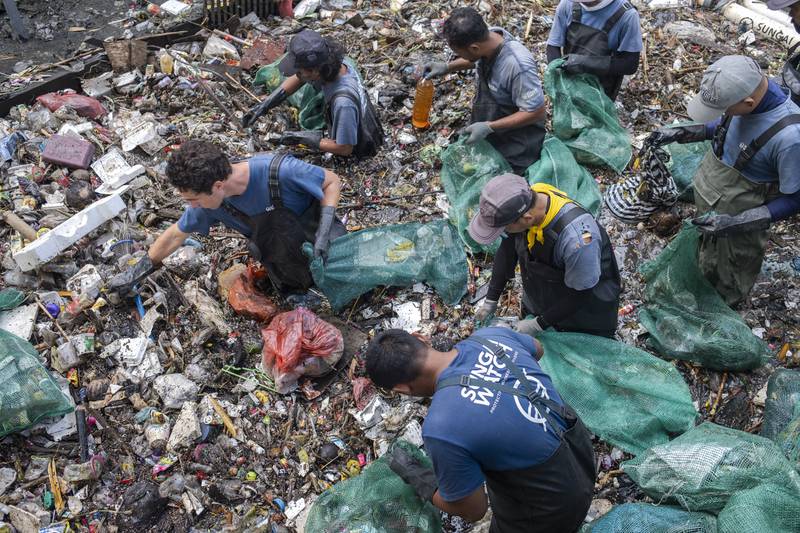
9. Dubai Conference Highlights Global Plastic Recycling Drive
International efforts to boost plastic recycling rates and pave the way for a more sustainable future are taking centre stage in Dubai this week. The three-day event aims to present recycling solutions to the global challenges posed by plastic waste. A growing worldwide population is now producing twice as much plastic waste as it did only two decades ago, with only nine per cent of it recycled, according to a 2022 report from the Organisation for Economic Co-operation and Development.
Plastic waste clogging up oceans also accounts for the bulk of marine pollution. A conference will be held alongside the convention, with speakers from top companies discussing topics including the state of collection and sorting of recycling in the region, chemical recycling, the challenge of regulation and the issue of plastics in the world’s oceans.
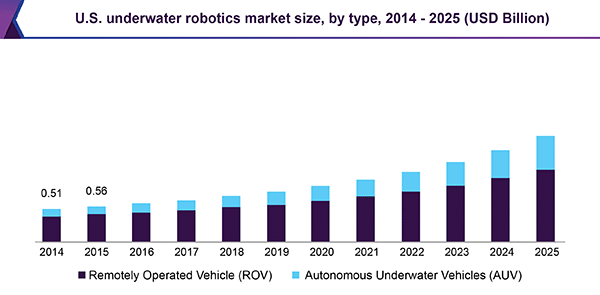
10. Beneath the Waves: Emerging Trends in Underwater Robotics Market 2023
Underwater Robotics Market Overview: The underwater robotics market provides remotely operated vehicles (ROVs) and autonomous underwater vehicles (AUVs) used for marine exploration, research, and offshore industries. Underwater robotics enable deep-sea exploration, underwater inspections, and data collection in challenging environments. Market growth is influenced by ocean exploration initiatives, offshore energy projects, and environmental monitoring.
Manufacturers focus on durability, navigation capabilities, and sensor integration. Collaboration between robotics companies, marine research institutions, and offshore companies drives innovation and market expansion. Subaquatic exploration: Underwater robotics enables remote exploration and research in underwater environments. Marine applications: Used for marine biology, oceanography, deep-sea exploration, and underwater maintenance. Safety and efficiency:
Underwater robots perform tasks in hazardous conditions or depths that are challenging for humans.Sensors and data collection: Underwater robots are equipped with sensors to collect data on water quality, marine life, and underwater terrain.

11. Africa Climate Summit Links ‘Unfair’ Debt Burden With Calls to Make Continent’s Green Assets Pay Off
Climate change is “eating away” at Africa’s economic progress and it’s time to have a global conversation about a carbon tax on polluters, Kenya’s president declared. The growing African continent of 1.3 billion people is losing 5% to 15% of its gross domestic product growth every year to the impacts of climate change, according to Ruto and noted Africa’s 54 countries “must go green fast before industrializing and not vice versa, unlike (richer nations) had the luxury to do.”
Transforming Africa’s economy on a green trajectory “is the most feasible, just and efficient way to attain a net-zero world by 2050,” he said. The African continent has 60% of the world’s renewable energy assets and 30% of the minerals key to renewable and low-carbon technologies. One goal of the summit is to transform the narrative around the continent from victim to assertive, wealthy partner.
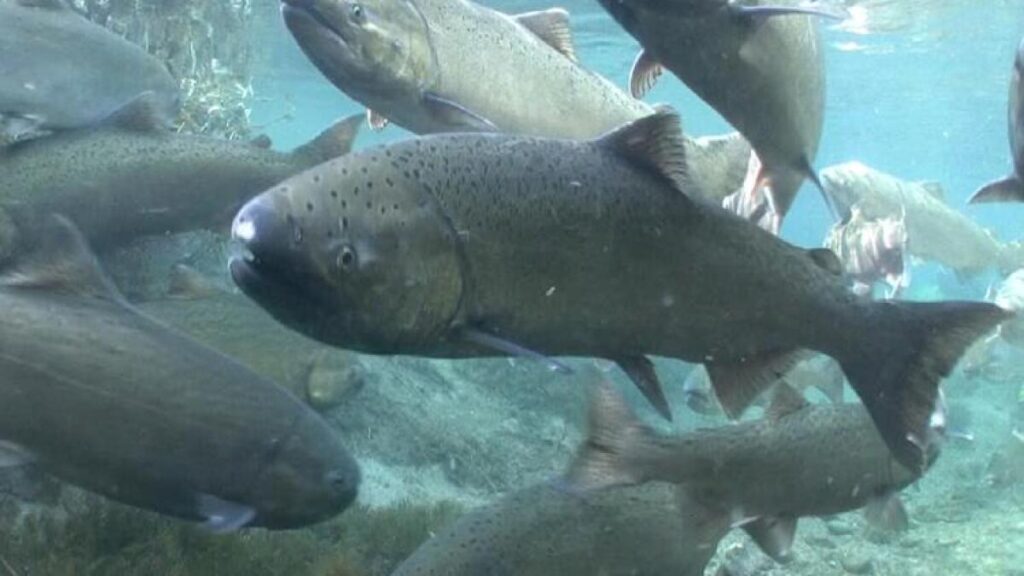
12. New Appointees Join Alaska Salmon Research Task Force
On Aug. 31, Alaska’s congressional delegation congratulated 19 appointees to the new Alaska Salmon Research Task Force, the result of federal legislation passed last year. The appointees, spread between federal and state, industry, subsistence, and academic subgroups, will be required to develop a coordinated research plan examining the challenges facing Alaska’s salmon within one year of convening.
An additional 29 names were announced to serve on a working group looking specifically at salmon declines on the Yukon and Kuskokwim rivers. There are four government representatives on the task force, five people from the fishing industry, five from educational institutions, and five subsistence representatives, including Oscar Evon of Kwigillingok and Justin Leon of the Kuskokwim River Inter-Tribal Fish Commission.
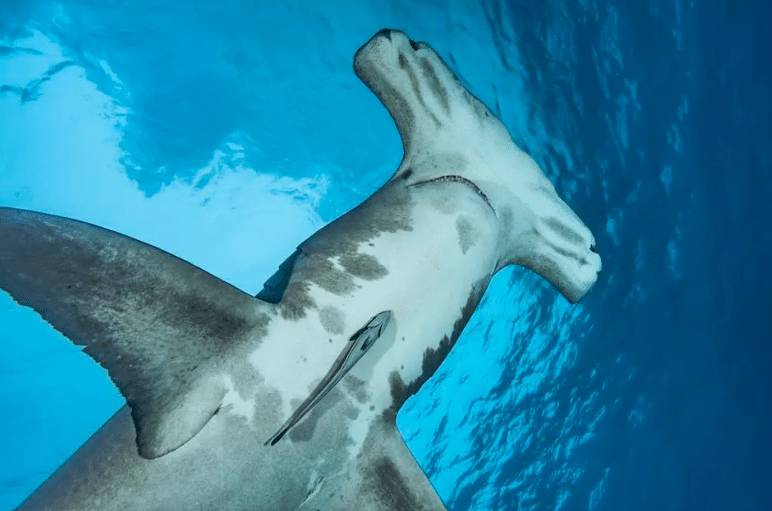
13. Great Hammerhead Sharks’ Hidden Lunar Calendar
Researchers in the Central Pacific Ocean have found the lunar cycle may guide these apex predators. The great hammerhead shark is ecognized by its distinctive T-shaped head that resembles a hammer. Scientists conducted extensive underwater surveys, meticulously collecting data on 55 critically endangered great hammerhead sharks over several years at two Pacific atolls. Simultaneously, they recorded the lunar cycle. They found consistent patterns linking shark sightings and behaviors to specific lunar phases, especially the full moon.
One intriguing finding was that 54 of 55 sharks were female. It seems that the Rangiroa and Tikehau atolls serve as aggregation sites for great hammerhead sharks, despite their typically solitary nature. The absence of males hints at a link between these gatherings and the great hammerhead shark’s mating cycle. Moreover, lagoons and their protected warm-shallow-coastal waters are known to function as nursery areas for various shark species.
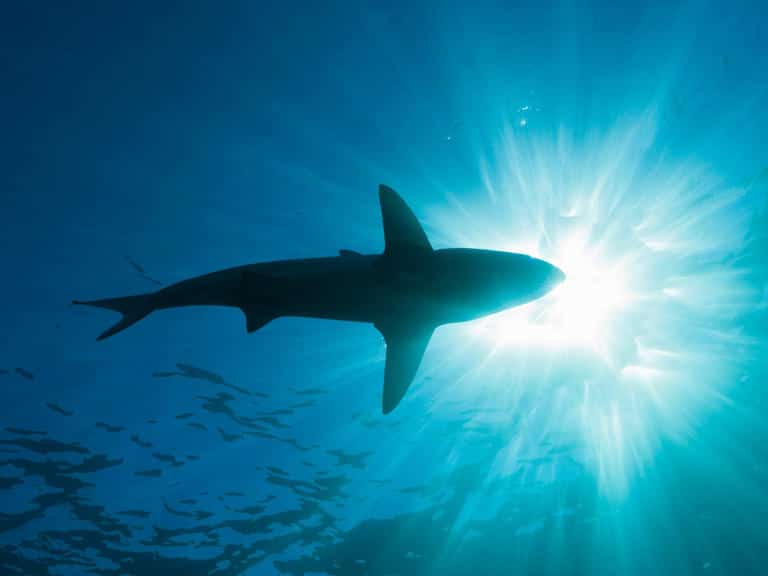
14. What Happens to Sharks, Dolphins, Alligators, and Other Marine Life During a Hurricane?
In a typical year, about 10 hurricanes will develop in the Atlantic basin. Many marine mammals and fish can move to deeper, calmer waters. If dolphins and other marine mammals don’t manage to escape the path of the hurricane, they can become trapped in freshwater habitats where they can’t survive. After 1992’s Hurricane Andrew, an estimated 9.4 million saltwater fish died.
Sediment may have clogged their gills or the pressure changes may have formed deadly nitrogen gas bubbles in their blood. Hurricanes can also impact stationary or slow-moving marine life by burying them with shifting sediment, algae blooms may block sunlight from reaching sea grass. After a hurricane, increased levels of freshwater, bacteria, and debris can also harm marine life. While hurricanes are natural events, ecosystem need sufficient time to recover before the next one happens.
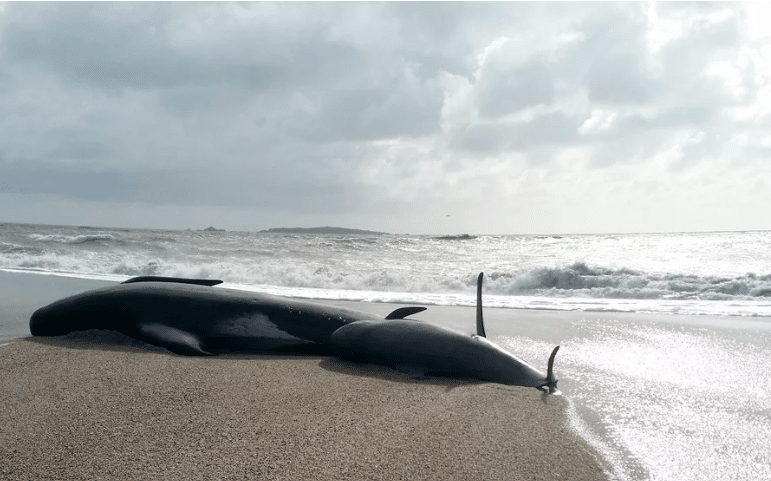
15. Mysterious Whale Strandings Baffle Experts
In a perplexing turn of events, three more whales have washed ashore along the coasts of New Jersey and New York, adding to the growing concern about marine life strandings in the region. Experts and environmental authorities are scrambling to uncover the underlying causes behind this alarming trend, which has now claimed a total of five whales in recent weeks.
These incidents have sparked urgent investigations into potential factors such as water pollution, changes in ocean temperatures, or disturbances in their migratory patterns. Marine biologists and rescue teams are working tirelessly to save any surviving whales and gather vital data to prevent further strandings.




